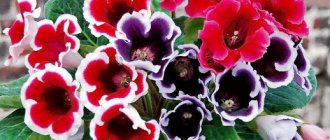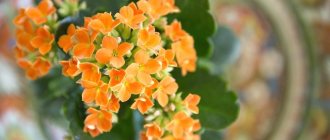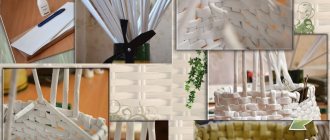- March 8, 2019
- Flowers
- Blackwhisker Rose
Boris Pasternak also wrote about how in winter, from behind the window frame, geranium flowers reach out to white snowflakes. This plant delights with bright colors and delicate aroma at any time of the year. Photos of geranium demonstrate the beauty of this flower, symbolizing comfort and warmth in the house. It is difficult to imagine the window sills and balconies of European houses without geraniums. In southern countries, it decorates parks and squares, delighting with bright colors all year round.
We invite you to get to know what geranium looks like, methods of propagation, and care tips. It has been proven to neutralize any negative energy in the room. This is a kind of amulet that extinguishes quarrels and protects the house from uninvited guests. We offer you the most interesting information about this wonderful flower.
Description of geranium
This plant is also called pelargonium. The word pelargos is translated from Greek as “stork”. The fruits of this flower look like a stork's beak. Geranium on the window will be useful to many. She is even considered a helper in love. It is important to note that this flower feels great not only in a pot, but also in the garden, in a flower bed. Today, about 300 species of pelargonium have been bred.
This plant was first discovered in the 17th century by botanist John Tradescan. As a result of long-term crossing of various types of wild geranium, a domestic variety was obtained. She arrived in Russia overseas as a gift. Once upon a time, the English king George III sent several plants to Catherine II to decorate the Pavlovsk Garden. For a long time, pelargonium was considered an aristocratic plant. Owners of rich mansions bred it in their greenhouses. Today it is used by all flower lovers. They remembered her because she is really gorgeous!
Homemade geranium, photos of which are posted in our article, can be tall and short. Its stems are covered with delicate fluff. The plant is characterized by beautiful rounded leaves with a wavy edge. Leaf color varies from bright green to dark bottle green. Sometimes there is a light border along the edges. Pelargonium leaves are also slightly pubescent. They contain essential oil, which can be released in the sun. This is a kind of protection against overheating.
Photos of geranium show that its flowers are collected in inflorescences that resemble bright hats. There are buds of very different colors: snow-white, soft pink, lilac, purple, burgundy.
Flower growers like homemade geraniums because these bushes, strewn with large umbrella inflorescences, are unpretentious, grow quickly, bloom profusely and multiply quickly. It is important to note that hanging varieties have also been bred, which look beautiful in hanging flower pots on balconies or verandas. A description of geranium without mentioning the ampelous type would be incomplete. We'll talk about it in more detail later.
Main types
To successfully breed a flower, you need to follow proper care in winter and during the warm season. All activities for growing pelargonium will depend on the type of plant. We will highlight 6 main types of geranium:
- Ampelnaya. It has long, flowing stems that can reach a length of up to 1 m. Hanging pots are used for planting ampelous pelargonium. Colors range from white to deep red. Purple and pale coral inflorescences look especially delicate. The buds resemble the shape of a brush and are located at the tops of the falling branches. The leaves have a smooth surface. In the photo below you can see what ampelous geranium looks like.
- Royal. Of all the varieties it is considered the most capricious. This is a low-growing plant (up to 50 cm in height). All the beauty lies in large double flowers, collected in luxurious inflorescences. Royal pelargonium resembles a bright colored hat. Sometimes spotted flowers are found. The leaves are round in shape, but with jagged edges.
- Zonal. It is considered the most common type. Stems can reach up to 80 cm in height. The leaves are characterized by a round shape and a white, brownish or yellowish edge. The stems grow straight, and at the tops they produce inflorescences in the form of umbrellas of different colors.
- Fragrant. The flowers of this geranium have a pleasant aroma. There are varieties with different notes of smell: lemon, apple, cinnamon, rose, etc. There are about 150 species in total. It is not the flowers that are considered decorative, but the leaves. The flowers are very small and grow one at a time. This variety is very capricious in terms of flowering quality.
- Succulent. A rare flower due to the difficulty of its reproduction. It takes years for its cuttings to take root. The appearance of the plant resembles kohlrabi cabbage. Each stem has one leaf covered with hairs. The flowers appear on a branched peduncle and are greenish-white in color.
- Variegated. It is distinguished by variegated leaves. The leaves may have red or yellow spots, streaks, or lines. Its bushes are low (up to 45 cm). Flowering is inconspicuous in the form of small small flowers.
Propagation by seeds
There are three ways to propagate geraniums at home: seeds, cuttings and roots. Each method has its own advantages and disadvantages. You can try growing a pelargonium bush from seeds. They are sold in the store today. A flower grown from a seed may differ from the parent plant. This is how new varieties are developed. Seed propagation is quite long. It should take about a year for a full-fledged bush to form.
To get started, purchase pelargonium seeds. Prepare a loose substrate of turf soil, peat and sand for sowing them. For better pecking of the seeds, rub them with sandpaper. Then place them in a growth enhancer for a few hours. Sow the seeds on top of the substrate and lightly sprinkle with sand. Spray with water at room temperature, cover the container with film and place in a warm place.
After germination, move the containers to a cool, well-lit room. After two days, water the seedlings with a pink solution of potassium permanganate, but make sure that the drops do not fall on the sprouts themselves. 14 days after germination, pick the seedlings. After another month and a half, transplant them into a permanent pot. As soon as the sixth leaf appears, pluck. This is necessary to form a beautiful bush of homemade geranium. If the stems are not pinched, they will become very elongated.
Transfer
Justifying its harmful nature, grandiflora pelargonium does not like frequent replanting. If you plan to keep royal pelargonium in open ground in the summer, then be prepared for the fact that moving it to wintering may cause the death of the plant.
Pelargonium in flowerbeds integrated into the exotic landscape of a barbecue corner
Grandiflora pelargonium (Pelargonium grandiflorum) is less common than its close relative, zonal pelargonium.
Attention! When providing royal geranium care at home, when replanting, limit yourself to adding substrate to the pot, but do not rush to replant the flower. Pelargonium disturbed at the wrong time will take offense and stop blooming.
The plant is calm about the composition of the soil, and happily grows in a mixture of humus, turf and leaf soil, sand and peat. The main thing is not to forget about drainage.
Vegetative propagation
Cuttings can be carried out at any time of the year, but it is better to use autumn or spring for this. In spring, shoots awaken and growth is activated. A cutting planted in the spring will delight you with a beautiful inflorescence in the summer. The strongest cuttings are in the fall, after the end of the flowering season. They are strong and quickly accepted. Autumn propagation by this method is considered the best. At the same time, flowers will appear at the beginning of summer. How to propagate by cuttings:
- Cut healthy cuttings 7-10 cm long. Do this with a knife or pruning shears. Make sure that the cut is located between the leaf nodes.
- Remove excess leaves from the bottom of the cutting, leaving them only at the top. This will prevent moisture evaporation and allow roots to form faster. Keep the cuttings in the growth stimulator for 3-5 minutes.
- Make a hole in a container with the substrate, lower the cutting there, cover it with soil and water it.
In addition to this simple method of cuttings, rooting in a bag or special greenhouses is also used. Before planting a cutting, some gardeners place it in a glass of water and wait for roots to appear. This method is also quite effective, because geranium takes root quickly.
Sometimes pelargonium produces new shoots from its roots. They are used to produce new bushes. To do this, the plant is taken out of the pot and divided so that each sprout has its own root system. Then the bushes are planted in separate pots.
Reproduction methods
Royal geranium propagates vegetatively, by apical cuttings, some varieties by seeds, but they need to be purchased. Those collected independently produce splitting and are not similar to the mother plant.
Sowing is done from December to April in a mixture of peat and sand to a depth of 0.5 cm. Cover with glass or film and keep at 22-24 ° C and high humidity. The seedlings are grown in the light. At the stage of 2-3 true leaves, seedlings need to be planted in individual cups.
But more often, amateurs propagate Royal geraniums using apical cuttings 7-10 cm long. Unlike other species, Grandiflora hybrids take root worse; the operation is best done at the end of summer, when the shoots harden; the soft green ones usually all disappear. Peculiarities:
- Royal geraniums cannot be rooted in water - the cuttings will definitely rot;
- You can use clean sand or perlite, but it is not advisable - when transplanting, the roots break, regenerate poorly, and there will be lunges;
- It’s better to take a mixture of peat with perlite or sand - when the roots entwine the lump, you can transfer it into a nutrient substrate without destroying it.
The cut is made obliquely, the lower leaves are torn off, and the cuttings are dried for about 2 hours in partial shade with good air circulation.
Before planting Royal geraniums, the lower part is treated with root formation stimulants. You can put it in a greenhouse or under a transparent cap, but only in such a way that:
- the leaves did not touch the walls;
- no condensation got on them;
- daily ventilation is required.
Usually after 2-3 weeks it is already clear whether the Royal geranium has taken root. But it is better to transfer the cutting without destroying the coma, and this is only possible when the roots entwine the substrate.
Trimming
Many gardeners are interested in pruning geraniums in autumn and spring. This is necessary for lush flowering and bush formation. If pelargonium is not pruned at least once a year, there will be few inflorescences, the shoots will become bare and elongated, and the flower will take on an unattractive shape. The flowering of geraniums is very dependent on this procedure. You need to constantly pay attention to the growth and length of the stems. This is done for the following purposes:
- The appearance of new shoots, the formation of new primordia of inflorescences.
- Creating a compact, even plant shape.
- Lush, long-lasting and stable flowering.
- Obtaining high-quality planting material.
First, let's talk about autumn pruning and preparing geraniums for winter. It is carried out after the formation of new peduncles is complete. This procedure will significantly improve the health of the plant. First, remove all dried flowers, leaves, and damaged stems. The bush is inspected, elongated shoots that spoil the appearance of the plant are shortened. Pruning is carried out in the internodes, where over time shoots form from dormant buds. Autumn pruning requires shortening the stems by a third. There is no need to be afraid of deep pruning of pelargonium. Over time, it will make up for everything and form new sprouts in the nodes. It is recommended not only to trim bush geraniums, but also to pinch them after every fourth bud. This procedure can be carried out until December. Care for geraniums in winter is kept to a minimum.
In spring, less drastic pruning of plants is carried out. It is performed in February or early March. Delay is fraught with late formation of flower buds. How is this done? Only long and weakened stems are eliminated. They are cut so that two or three buds remain at the bottom.
Transplantation process
Pelargonium easily tolerates transplantation in winter and summer. But spring is best suited for this, when the plant awakens from winter dormancy. Geranium does not like much space in the pot, because most of its energy goes into flowering. It is better to select compact containers for transplantation. Large pots do not contribute to abundant flowering, because all the energy will be spent on developing the root system. There are several criteria by which you can find out whether the bush is worth replanting:
- Plant growth slows down.
- You often have to water the bush because the soil dries out.
- Roots begin to emerge from the hole in the bottom of the pot.
- The roots entwine the entire lump of earth with geranium.
If you decide to transplant a plant into a pot that has already been used, then first disinfect it. Wash it with a solution of potassium permanganate. Then place drainage in the form of small pebbles into the prepared container. Remove the bush with a lump of earth from the old pot and place it in a new one. Fill the space between the bush and the walls with moist substrate. Lightly compact the soil.
Transplanting a plant
There is no need to replant geraniums often, because they are difficult to replant. For indoor care, it is recommended to replant when absolutely necessary - for example, the roots of the plant have come out of the drainage hole, the plant has become ill due to frequent watering.
The best period, which is recognized by experts for planting or replanting, is during the growing season of geranium in early spring. An important detail is that the new pot should be 2 cm larger in diameter than the previous one.
If the flowerpot is large, the green mass will actively grow, but there will be little color.
How to water geraniums
Pelargonium loves soft, clean water at room temperature. It is important to note that it does not need spraying. Do not use water directly from the tap; wait until it settles first. You can also pass it through a filter.
How to water geranium so that it blooms often and beautifully? The regime is important here. You can’t water it often, as the roots may rot. It is enough to do this twice a week. Water from a container with a narrow neck so that the water seeps out near the walls of the pot and does not fall on the leaves.
General care features
Indoor geranium is a modest flower in its needs . The main points of its content are light conditions, proper nutrition and watering.
Lighting
The flower loves to soak up the sun. She really likes the place on the windowsill of the south window. In good light, the leaves will be bright green and the flowers will be rich in color. In summer, the scorching sun can cause burns. It doesn't hurt to create some light shading. In winter, add artificial lighting to avoid lack of light. Use fluorescent lamps as additional lighting.
If the plant begins to pull to the side, this is a clear sign of a lack of light.
Feeding
The composition of the fertilizer for fertilizing is different for each growth period. During flowering, fertilize with a composition that includes phosphorus. Thanks to it, flowering will be long and the root system will be strong. Fertilizers with a high potassium content will help you increase resistance to disease.
For a powerful stem and beautiful foliage, give nitrogen-containing fertilizers such as urea, sodium nitrate, etc. It is preferable to give a nitrogen-containing composition in the spring. In summer and autumn, phosphorus and potassium fertilizers. Fertilizing once every 2 weeks is sufficient. In winter, fertilizer should be excluded from the diet.
Use exclusively mineral mixtures, not organic ones.
Watering mode
How often to water geraniums depends on the time of year. In summer, water once every two to three days, depending on the drying of the earthen clod. Geranium likes to drink clean water at room temperature. Try to water without getting on the leaf blade. In winter, reduce the amount of watering to 1 - 2 times a week. The main thing is to ensure that there is no stagnation of water; this can cause her to get sick or die.
We invite you to watch a video about the nuances of watering indoor geraniums:
Temperature and humidity
During the period of active growth, geranium prefers a temperature of 20 - 25 0 C. In autumn and winter, it can grow at temperatures of 12 - 150 C. The air humidity indicator is not important for the plant. Geranium can easily adapt to the humidity conditions of your apartment.
Additionally, humidifying the air by spraying the flower is not recommended.
The soil
Soil for geraniums can be purchased both universal and special. A composition of humus, leaf and turf soil with sand in a ratio of 2:2:2:1 is also suitable. Provide good drainage with expanded clay or pebbles. In addition to high-quality soil with good drainage, systematic pruning is necessary.
Bush formation
The formation of a bush is necessary to maintain proper growth, stable flowering and neat appearance. For the procedure, use clean and disinfected instruments. We carry out the operation when the plant stops blooming, that is, in the autumn. Remove dried inflorescences and cut off 1/3 of the side shoots left without leaves.
The formation of the bush can be carried out until December. The sections are sprinkled with charcoal to prevent the development of the disease. In spring, the formation of a bush is carried out in the event of the appearance of weakened and very elongated shoots.
Spring pruning promotes the rapid onset of the flowering phase.
Top dressing
When fertilizing geraniums, consider the season. In spring and summer, fertilizer is required once every two weeks, and in winter there is no need to feed the plant. For lush flowering, a complex mineral fertilizer with potassium, phosphorus and nitrogen is used. Fertilize an hour after the main watering. Sometimes, even in winter, you can get flowers on geraniums if you water them with sweet water. You can do this once a week. How to feed indoor geranium so that it blooms all summer? Iodine solution has an excellent effect on flowering. Just a drop per liter of water is enough. Make sure that the iodine solution does not get on the leaves. Photos of geraniums in the video below demonstrate abundant flowering after timely feeding.
How to care for such a flower
- Lighting. It should be bright, but diffused (shade the flower at least on a hot summer afternoon). If the plant grows in the shade, it will stretch out unattractively, “looking” for light, and, moreover, it may drop its buds, or even refuse to set them at all.
- Temperature. Royal geranium loves warmth. You can keep it on a closed balcony, but you can’t take it out into the open or into the garden, since the flower is very sensitive to drafts.
- Watering. As soon as the top of the soil dries out (in summer), pour plenty of water into the pot. Although pelargonium will not die if it “dries out” a little, it likes frequent watering.
- Spraying. If the air is dry, it is better to irrigate the flower with a spray bottle. But so that after this the sun does not hit the leaves, otherwise it will end in a burn (dew droplets dangerously refract the light, increasing its intensity). So spray your pet in the evening. If you do not spray the flower in the heat, aphids and other pests may grow on the leaves, which are difficult to remove.
- Circumcision. As with petunias, dried leaves and faded flowers must be cut off from pelargonium all the time.
- Nutrition. This is a necessity if you expect a “cap” flowering of your varietal beauty. A mineral complex fertilizer for decorative flowerpots will suit you. Apply it in spring and summer.
Diseases and treatments
Unfortunately, sometimes pelargonium succumbs to certain diseases. Here are the diseases of indoor geranium and their treatment:
- The leaves turn yellow and dry out.
- Stops blooming.
- Covered with Botrytis fungus.
- The roots are rotting.
- The leaves become covered with a rusty coating.
- Bacterial and viral infections occur.
- Spotting appears.
Yellowing of leaves depends on a lack or excess of moisture and light. Geraniums bloom poorly due to insufficient pruning. Lighting also affects the formation of buds. To make it enough, you can use a special lamp. Drying of the leaves is treated by watering with a 5% solution of Bordeaux mixture or Fitosporin. If a geranium is infected by a fungus, it becomes covered with gray spots and fluff. All this is due to excess moisture. The affected flower fragments must be completely removed, and the rest treated with fungicides.
Diseases and pests, control methods
Due to violation of the rules of agricultural technology, pelargonium may experience health problems. With excessive watering, gray mold, root rot, and powdery mildew appear. To save the plant, you need to stop watering and remove all damaged parts. Treat the flower with a fungicide (Fitosporin) and replant it in a fresh substrate. If there is severe damage from root rot, it is almost impossible to save the crop. Therefore, it is better to destroy it along with the soil so as not to infect other plants with a fungal infection.
Pelargonium pests:
- aphid;
- whitefly
These insects feed on the sap of the plant, causing its leaves to dry out and fall off. To get rid of pests, it is necessary to treat the bush with an insecticide (Aktellik, Decis, Aktara).
Garden geranium
In addition to indoor geraniums, there are also garden geraniums. True, it has not become widespread in Russia. When choosing this type of geranium, you need to focus on the climatic conditions of your area and plant adapted varieties. This species was bred from wild varieties. Garden geranium is characterized by openwork leaves and delicate solitary flowers. This is a perennial crop that reproduces by self-sowing. Particular attention should be paid to preparing perennial garden geraniums for winter. Note that the plant tolerates cold well. The main thing is to cut off the ground part in the fall and cover the soil around the bushes with mulch.











